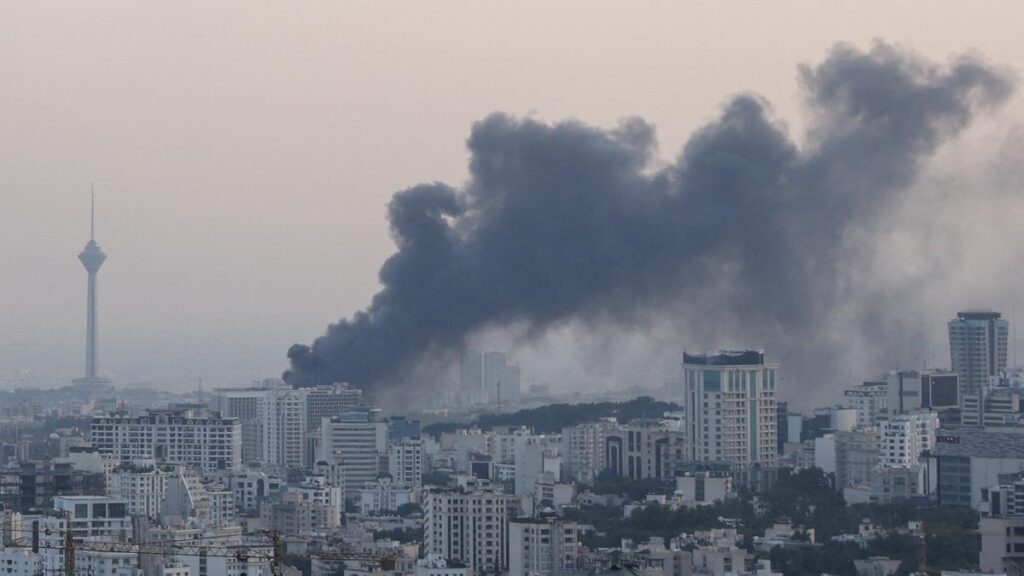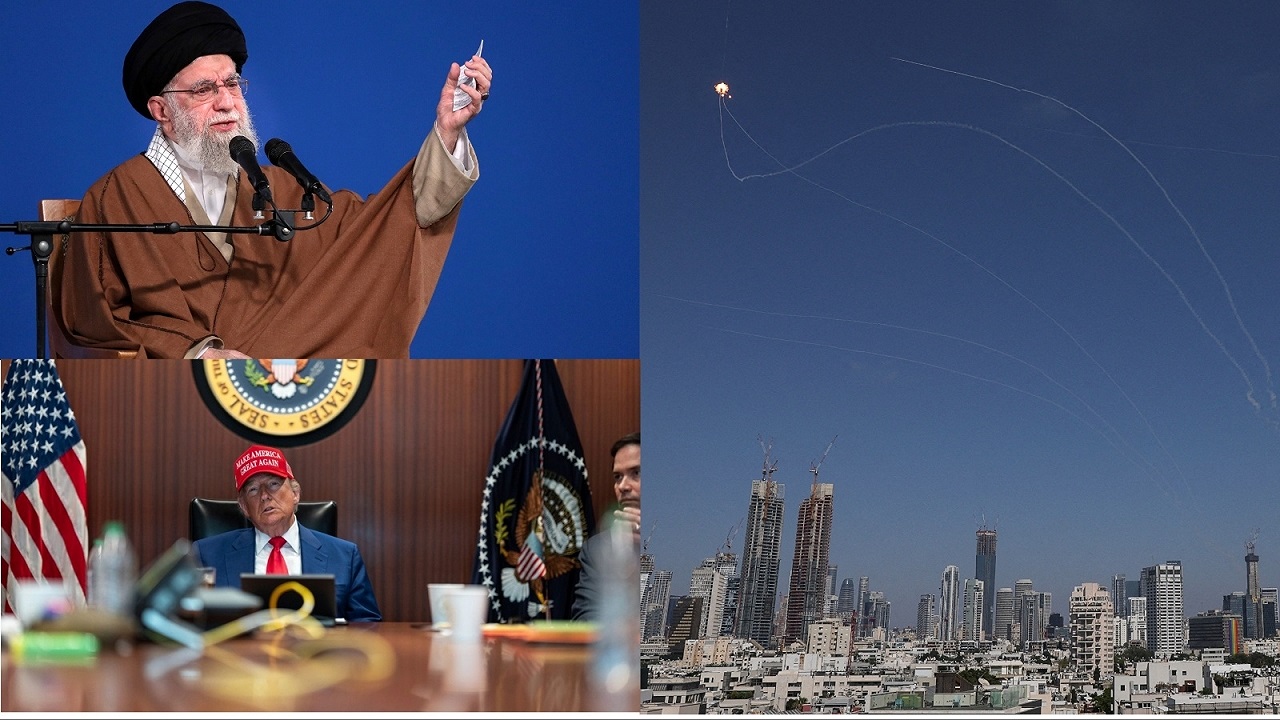
Smoke rises following an Israeli attack on the IRIB building, the country’s state broadcaster, in Tehran, Iran, June 16, 2025. | Photo Credit: Reuters
The Israel-Iran conflict escalated further on June 23, 2025
The Israel-Iran conflict escalated further on June 23, 2025, as Israel confirmed airstrikes on surface-to-surface missile launch sites in western Iran. This marks the 11th consecutive day of intense hostilities between the two longtime adversaries. Since June 13, Israel has launched targeted attacks on Iran’s military infrastructure, nuclear facilities, and top security officials.
Early Monday, skies over Iran saw heavy aerial combat, as Israeli fighter jets continued their offensive operations. Tehran responded with a strong warning, signaling that major retaliation is inevitable.
US Role: Nuclear Strikes and Mixed Messages
The United States played a pivotal role over the weekend by launching bunker-buster bombs at three of Iran’s nuclear facilities. President Donald Trump claimed the attack had “obliterated” Iran’s nuclear capabilities. However, senior defense officials cautioned it’s too early to measure the actual damage.
Iran fiercely condemned the U.S. involvement, accusing it of crossing “a very big red line.” Despite the strikes, U.S. officials including Defense Secretary Pete Hegseth stated that the U.S. “does not seek war” and signaled openness to restarting diplomatic dialogue.
What’s Next in the Israel-Iran Conflict?
As the Israel-Iran conflict intensifies, global leaders are urging restraint. However, Iran insists the time for diplomacy has ended and that it reserves the right to defend itself by any means necessary.
With growing fears of a wider regional war, all eyes are now on Tehran’s next move. The world watches anxiously as the Middle East faces another critical moment in its volatile history. The world watches anxiously as the Middle East faces another critical moment in its volatile history. Any further escalation could trigger unpredictable consequences beyond the region.




